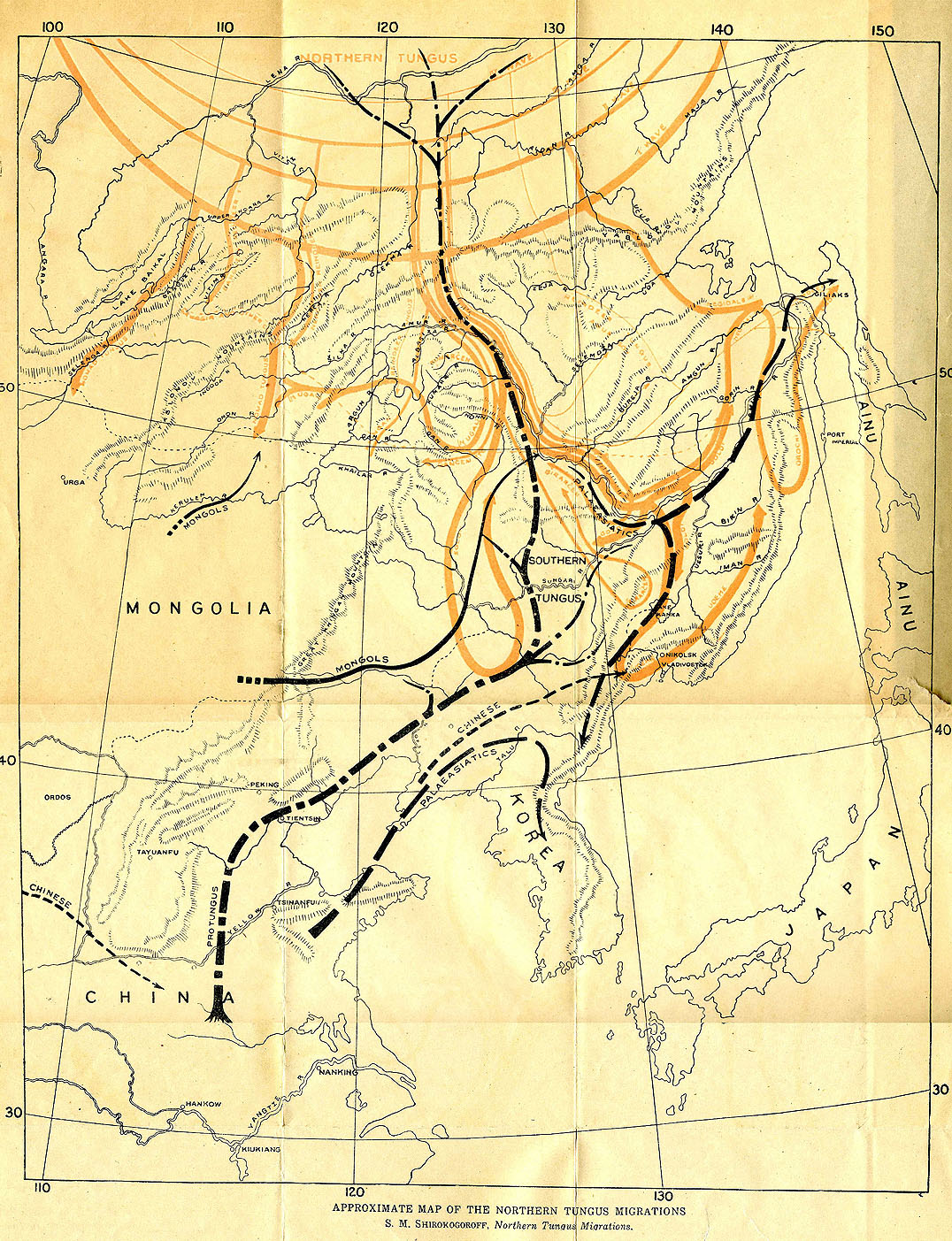The Map
The facts and hypotheses expounded in the present paper are shown in a graphic form in the above Map. The details concerning the migrations of Paleasiatic, Mongol, Chinese and Southern Tungus groups are altogether omitted. On the one hand, a complete representation of migrations occurred during the period treated in this paper constitutes a special topic, viz., ethnical migrations in general in this part of Asia which passes over the limits of the present paper, i.e., the place of the Goldi among other Tungus groups in the light of Tungus migrations; on the other hand, it is technically impossible to represent those migrations in a full manner on one and the same map. Moreover, all phases of the Northern Tungus migrations cannot also be shown on one map. Owing to this, I have confined myself to giving the most important movements of the Northern Tungus and indicating the general directions of other migrations, omitting details of those movements, for instance, that of the Solon. The lack of historic maps showing extension of various political formations (which are not indeed the same as ethnical ones!) during the period treated may partly be completed by comparing my map with those of J. Klaproth (op. cit.) that must of course be taken with corrections implied by our extended knowledge of historic successions. Technical difficulties of map printing did not permit putting on the present distribution of various ethnical groups. Those who are willingj to follow my exposition may consult: (1) the approximate ethnographical map, added to my Anthropology of Northern China: (2) the map of the Goldi given by J. A. Lopatin (op. cit.); (3) this ethnographical map of the Maritime Gov. given by V. K. Arseniev, (Ethnological Problems, etc.); and (4) the ethnographical map published (1912, St. Petersburg) by the Colonization Department of the Russian Ministry of Home Affairs.
I do not pretend that all directions of migrations shown reproduce exactly the movements of various groups, especially with reference to the starting points of migration which showing but successions of waves are certainly hypothetic ones. The same may be stated regarding the junction of directions exactly established with hypothe tic ones. Thus,) some other variants of directions may also be suggested. In the present sketch map I am showing no distinction in designation of hypothetic directions and those established as historic facts which I hope to do in my other studies where I shall deal in detail with ethnical migrations in this part of Asia.
The groups that have left their former territory or are extinct are shown in brackets, also the directions of those which are absorbed by other ethnical groups have no arrows at the ends of lines.
